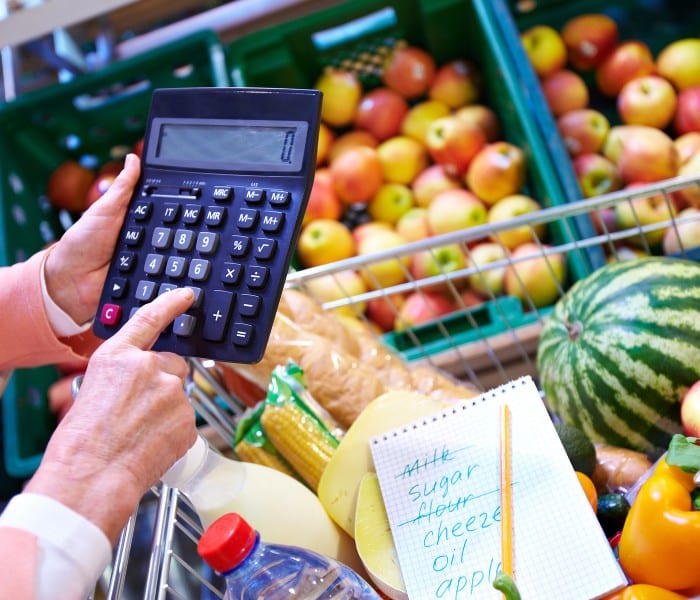The United States Department of Agriculture has reported that approximately 42 million Americans rely on Supplemental Nutrition Assistance Program (SNAP) benefits to put food on the table. However, the outlook for those who depend on this assistance is far from promising. In 2022, SNAP benefits were received by 435,900 Minnesotans, representing a staggering 8% of the state’s population.
With the economic fallout from the pandemic and the subsequent rise in prices of essential goods, the situation looks bleak for those who depend on SNAP benefits to survive. Beside the particular situation of every family, the food shelves are struggling to survive the nationwide cut of the SNAP.
The End of Snap Benefits That Will Impact American Households
The end of the additional federal funding for the SNAP system -AKA food stamps- is a critical blow to millions of Americans who rely on this program for food assistance. The funding was initially added in the spring of 2020 to help those who were struggling with unemployment and financial hardships due to the COVID-19 pandemic. However, even with the seeming end of the pandemic, many households are still struggling to put food on the table, especially with the rising cost of goods.

As a result of the end of the additional benefits, families in the need will now receive at least $95 less per month on average. According to the nonpartisan research and policy institute Center on Budget and Policy Priorities, some households, who under regular SNAP rules receive low benefits due to somewhat higher but still modest incomes, will have their benefits reduced by $250 or more per month. This is a significant reduction that will have a direct impact on the lives of millions of people across the United States.
What Is Being Done to Help Families With SNAP Benefits and Food Shelves
In response to this critical situation, organizations such as PRISM, with a food shelf in Golden Valley, are fundraising to support their community members with the end of the additional benefits. However, the scale of this crisis is so immense that it will require a concerted effort from all levels of government and society to ensure that people do not go hungry.
Remember that almost 42 million Americans rely on SNAP benefits, and that’s nearly the 10% of the American population. LaMonika Jones, interim director of D.C. Hunger Solutions, highlighted the dire situation faced by low-income residents in the District who lack access to financial support for basic needs like food. The emergency allotments provided some relief, with over 90,000 SNAP participants receiving around $14 million a month to support their households. Unfortunately, this vital assistance has now ceased, leaving many residents in a precarious situation.
The organization’s work includes promoting participation in federal nutrition assistance programs, such as SNAP, the Child and Adult Care Food Program, and the National School Lunch Program. It also advocates for anti-hunger policies at the D.C. Council. In recent times, D.C. Hunger Solutions played a critical role in advocating for the Give SNAP a Raise Amendment Act, which the D.C. Council passed in December. This bill will provide SNAP recipients with an additional 10% in benefits above their federal distribution amount. The organization’s efforts in lobbying for the bill will help alleviate some of the challenges faced by residents living in food insecurity.
Food Stamps 2023 – When SNAP Benefits Will arrive to Bank Accounts in All 50 States
So far, families that will continue to receive the food stamps are set to get their money in their accounts according to this time table:
- Alabama (April 4th-23rd)
- Alaska (April 1st)
- Arizona (April 1st-13th)
- Arkansas (April 4th-13th)
- California (April 1st-10th)
- Colorado (April 1st-10th)
- Connecticut (April 1st-3rd)
- Delaware (April 2nd-23rd)
- District of Columbia (April 1st-10th)
- Florida (April 1st-28th)
- Georgia (April 5th-23rd)
- Hawaii (April 3rd-5th)
- Idaho (April 1st-10th)
- Illinois (April 1st-10th, and older cases April 1st-20th)
- Indiana (April 5th-23rd)
- Iowa (April 1st-10th)
- Kansas (April 1st-10th)
- Kentucky (April 1st-19th)
- Louisiana (April st-23rd)
- Maine (April 10th-14th)
- Maryland (April 4th-23rd)
- Massachusetts (April 1st-14th)
- Michigan (April 3rd-21st)
- Minnesota (April 4th-13th)
- Mississippi (April 4th-21st)
- Missouri (April 1st-22nd)
- Montana (April 2nd-6th)
- Nebraska (April 1st-5th)
- Nevada (April 1st-10th)
- New Hampshire (April 5th)
- New Jersey (April 1st-5th)
- New Mexico (April 1st-20th)
- New York (April 1st-9th)
- North Carolina (April 3rd-21st)
- North Dakota (April 1st)
- Ohio (April 2nd-20th)
- Oklahoma (April 1st-10th)
- Oregon (April 1st-9th)
- Pennsylvania (April 3rd-14th)
- Rhode Island (April 1st)
- South Carolina (April 1st-10th)
- South Dakota (April 10th)
- Tennessee (April 1st-20th)
- Texas (April 1st-28th)
- Utah (April 5th, 11th and 15th)
- Vermont (April 1st)
- Virginia (April 1st-7th)
- Washington (April 1st-20th)
- West Virginia (April 1st-9th)
- Wisconsin (April 1st-15th)
- Wyoming (April 1st-4th)